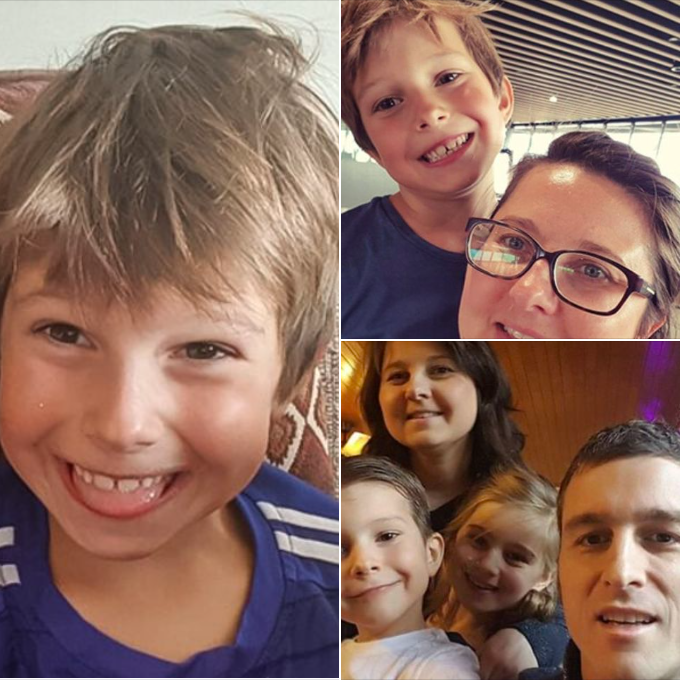

In a medical milestone that has captured global attention, a young boy from Belgium has achieved what was once thought impossible.
The 13-year-old boy, named Lucas Jemeljanova, became the first person ever to be cured of a deadly brain cancer known as diffuse intrinsic pontine glioma (DIPG).
Lucas’ incredible journey has sparked hope for countless individuals battling this rare and aggressive form of cancer – and his story will inspire you.
(document, ‘script’, ‘exco-player’));
Lucas’ story
Lucas was diagnosed with DIPG at the age of six, after telling his parents he felt unwell while on a family holiday. At the time, Lucas was unable to walk in a straight line and started losing consciousness and having random nosebleeds.
Little Lucas faced daunting odds, as this disease typically carries a grim prognosis, with only 10% of patients surviving more than two years, according to the Dana-Farber Cancer Institute.
Posted by Olesja Jmljnv on Thursday, February 21, 2019
In fact, statistically, 98% of patients with the rare brain tumor will die within five years. Sadly, children have a life expectation of just nine to 12 months following a diagnosis – making it one of the deadliest cancers for children.
Determined to fight, Lucas and his family embarked on a courageous journey that ultimately led to a groundbreaking medical breakthrough.
Lucas was enrolled in a clinical trial where he received a chemotherapy drug not previously used to treat DIPG, the Mirror reported. Despite the uncertainty surrounding its effectiveness against this particular cancer, Lucas responded remarkably well to the treatment, with his tumor gradually disappearing over time.
Today, at 13 years old, Lucas stands as a symbol of hope, having been in remission for an astounding five years.
A medical marvel
Dr. Jacques Grill, Lucas’s physician and the head of the brain tumor program at the Gustave Roussy Cancer Center in Paris, hailed Lucas’ case as a triumph against the odds and a source of inspiration for others battling DIPG. Lucas’ extraordinary recovery has reignited optimism not just for his own future but also for children worldwide facing similar diagnoses.
What makes Lucas’ case even more remarkable is the unique genetic makeup of his tumor. Dr. Grill revealed that Lucas’ tumor harbored an exceptionally rare mutation that made it highly susceptible to the experimental drug, per the Daily Mail. Understanding these genetic nuances is crucial for replicating Lucas’ success in other patients.
While the quest for a cure for DIPG remains challenging, researchers are actively investigating the genetic abnormalities of patients’ tumors and exploring innovative strategies such as tumor organoids — lab-grown cell clusters resembling organs — to mimic the cellular changes observed in Lucas’ case.
Posted by Olesja Jmljnv on Sunday, September 2, 2018
Marie-Anne Debily, a researcher leading the laboratory efforts, highlighted the importance of identifying a drug capable of replicating the effects seen in Lucas’ tumor cells. “The next step will be to find a drug that has the same effect on tumor cells as these cellular changes,” she said.
Though, she added that, on average “it takes 10-15 years from the first lead to become a drug – it’s a long and drawn-out process.”
Despite the hurdles, Lucas’ remarkable journey just goes to show how powerful resilience, innovation, and the unwavering dedication of medical professionals and families are.
What did you think of this story? Let us know in the comments!
READ MORE
Patrick Swayze’s lesser known brother Don is the mirror image of the late star
Carrie Underwood honors Toby Keith, the ‘true blue cowboy’ who ‘made his ride up to heaven’
:root
*,:before,:after,::backdrop.echobox.echobox[src*=\?embed]@media(min-width:510px)}@media(min-width:650px)}.fix-text-foreground.fix-text-foreground.fix-text-foreground *.font-small.font-small.font-small.no-margin.no-margin.neb-sr-only.neb-mb-0.neb-mb-4.neb-ml-2.neb-ml-\[-20px\].neb-mt-4.neb-flex.neb-grid.neb-hidden.neb-h-10.neb-h-full.neb-w-10.neb-w-full.neb-min-w-0.neb-min-w-\[calc\(100\%\+40px\)\].neb-max-w-full.neb-flex-1@keyframes neb-slide-into}.neb-animate-slide-in.neb-grid-cols-\[theme\(width\.7\)_auto\].neb-flex-col.neb-flex-wrap.neb-items-center.neb-gap-2.neb-gap-3.neb-gap-4.neb-rounded-md.neb-border-none.neb-bg-green-100.neb-bg-primary.neb-bg-red-100.neb-bg-signal.neb-p-6.neb-px-4.neb-px-7.neb-px-8.neb-py-4.neb-text-\[1\.4rem\].neb-font-bold.neb-font-normal.neb-leading-tight.neb-text-green-600.neb-text-neutral-50.neb-text-red-600.neb-shadow-md.neb-outline-none.neb-transition-all.neb-duration-100.disable-block.empty\:neb-hidden:empty.hover\:neb-bg-signal-dark:hover.focus\:neb-ring-2:focus.focus\:neb-ring-blue-600:focus@media(min-width:640px).sm\:neb-min-w-0}@media(min-width:1024px).lg\:neb-p-8.lg\:neb-px-16.lg\:neb-px-8.lg\:neb-py-6}
Thank you for subscribing!
Something went wrong. Please try again later.
Sign up for our newsletter
Sign up
I consent to the processing of my personal information. Read our policy